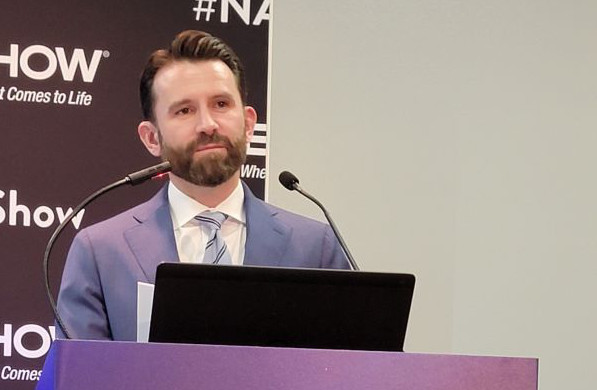Final ThoughtHere We Go Again
Exciting news! The FCC has ordered direct compatibility between digital cable TV and home sets. Set-top boxes? Forget them! Consumer electronics enters a new era!
The above paragraph could refer to last month's much-publicized approval of the HDTV "plug-&-play" agreement. On the other hand, it could also refer to an FCC order issued on June 24, 1998.
The latter required the cable industry to provide point-of-deployment (POD) security modules that could be inserted into consumer electronics products so consumers could connect them directly to digital cable systems without need of a set-top box. The PODs were due by July 1, 2000.
Three years and no PODs in use later, last month's government news release about the latest digital cable compatibility order was headlined "FCC Eases Digital TV Transition for Consumers." At least things are a little different this time. Even before the new order, Panasonic introduced a line of digital cable-ready TVs that have POD (now called CableCARD) slots. And this time the TVs are HDTV-capable, too.
As for eliminating the need for set-top boxes, however, even the FCC recognized a few problems: "Consumers will still need a set-top box to receive two-way services such as video on demand, impulse pay-per-view, and cable operator-enhanced electronic programming guides."
Then there's money. The new, digital cable-compatible TVs cost considerably more than non-compatible versions. They might save their owners monthly set-top box fees, but there are still likely to be monthly CableCARD fees. Panasonic's digital cable-ready TVs include the capability of not only digital-cable reception but also off-air digital terrestrial television (DTT) reception and ordinary analog TV (broadcast or cable) reception. In fact, as is common in high-end models, there are two analog tuners, allowing analog picture-in-picture. Digital picture-in-picture, on the other hand, could require a set-top box.
According to the Commission, "DTV televisions labeled ÔDigital Cable Ready' must include an over-the-air DTV tuner," one of the few modifications the FCC made to the agreement already worked out between the cable and consumer electronics industries last year. Might a manufacturer offer digital cable compatibility without DTT reception if it doesn't use the words "Digital Cable Ready"? That's unclear as this is being written.
Other aspects of the order were clearer. The satellite industry has been using selectable output control (the ability to shut off HDTV outputs when a copyright owner requires it) in its HDTV receivers. The order bans it. As a result, the Satellite Broadcasting and Communications Association called the decision "misguided" and said it would "leave open our options," presumably including lawsuits. No content protection could mean no blockbuster movies.
That's why CBS has been pushing the FCC to create a "broadcast flag" for content protection. Not only did the digital cable compatibility order avoid that issue, it also prohibits down resolution for broadcast programming (another possible crude form of content protection) and says there are no restrictions on copying it.
"The FCC...noted that it will address Digital Broadcast Copy Protection issues in the near future," according to last month's press release. In the meantime, more and more unprotected receivers are being made and sold. How many homes might buy digital cable-compatible sets? The National Cable & Telecommunications Association said last month that cable has already made HDTV available to 60 million U.S. households. Of course, DTT is "available" to more than 100
million U.S. households but has yet to be received in even 1% of them. Ah, well. At least we're not alone. Alex Schultzycki, of the European Broadcasting Union, told an audience at last month's International Broadcasting Convention in Amsterdam that Finland has the world's highest household penetration of DTT receivers, at 6.5%. Next comes the U.K., with 6.1%. Sweden has 4.2% and Spain 1.1%. No other country has yet achieved even 1%. Still, according to the FCC, in mid-2002 more than 85% of U.S. households subscribed to some multichannel video programming distributor. The future of HDTV does seem to be in cable--and satellite. Cablevision's new Voom satellite service is to have 39 channels of HDTV--21 of them exclusive--and none of them broadcast stations.
As for receiving Voom, that will involve a set-top box.
Mark Schubin is an engineering consultant with a diverse range of clients, from the Metropolitan Opera to Sesame Workshop.
Get the TV Tech Newsletter
The professional video industry's #1 source for news, trends and product and tech information. Sign up below.
